blog
SPARTAN SPORT WRIST HR 2-week trial campaign
The following dates and venues have been confirmed due to popular demand.
Due to popular demand, additional events will be held at the following dates and venues. Please take advantage of this opportunity to participate.
Initial training dates Rental period Stores for reservations Telephone number for reservationsSaturday 22 July - Sunday 6 August Salomon Suunto iciclub Kanda 03-5577-6922
First, you will receive training on how to use the SPARTAN SPORT WRIST HR, and then you will be able to use it for two weeks on a rental basis. During this time, you will receive coaching from your coach online (Movescount) on how to improve your exercise performance as well as any questions you may have about the product. Upon return, you will receive a souvenir if you purchase the product on the spot. Of course, you can also just return the product without purchase. For more information on the product, click here.
《Schedule》11:00-12:00: Gathering at the shop, setting up the clock, explaining how to use it, etc.12:00-13:00: Running with the instructor13:00 - 14:00: Go back and explain how to use Movescount, how to read data, create community groups, coaching during the two weeks, etc.
Click here for information on each location.
*Capacity of 15 participants: first-come, first-served; registration closes when capacity is reached.
*Please note that the event will take place in light rain
Free of charge
Please come dressed for a light run on the day.
*Please contact each shop if you have any questions.
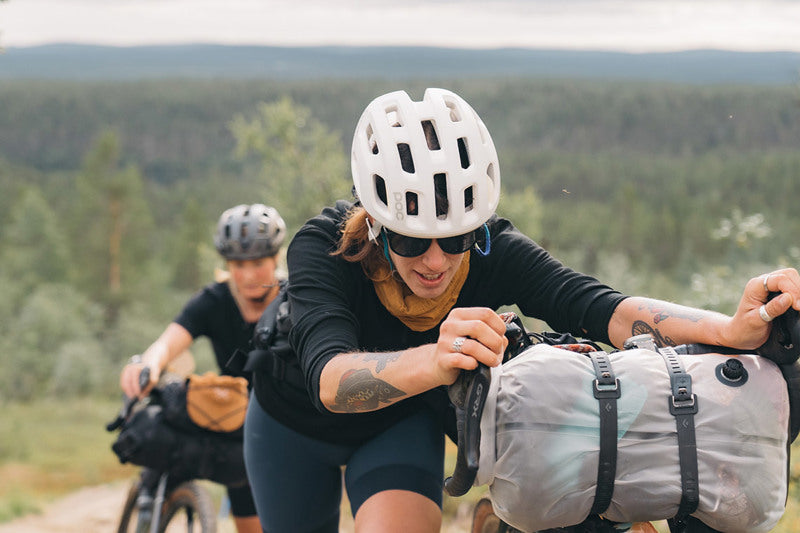
Five adventure films to watch
Lost then found
When you lose a part of yourself you begin to question why you were holding onto it so much, to begin with, in a life where change is the only constant, how do we let go and focus on the things that bring us joy?
Lost then found is the introductory episode of Suunto ambassador Christian Meier’s year-long project exploring the transition from a professional cyclist to an ultra trail runner.
”This project is about stepping back to gain a better perspective on life’s highs, lows, and challenges, which make it beautifully complex,” says Christian.
Caught in an avalanche. Is freeriding worth the risk?
Suunto ambassador Antti Autti has just started his 20th season as a professional snowboarder and kicks it off with a new Arctic Lines episode called “Twenty”. Twenty is actually split in chapters one and two so there’s plenty to watch!
“I’m not going to say I want to celebrate the anniversary but I want to have a season where I am really going for it!” Antti says.
In Twenty Chapter 2, Antti gets in trouble and is taken down by an avalanche. He is forced to think hard about his approach to risk-taking while exploring.
”No matter what we do, accidents can happen. And when that happens, our greatest responsibility is to share the experiences honestly, even if it’s painful. That way, others can learn from our mistakes and make better decisions in the backcountry.”
Bikepacking the Arctic Post Road
Adventure buddies and Suunto ambassadors Sami Sauri and Henna Palosaari went on a bikepacking trip way up above the Artic Circle over summer. Wild, vast open spaces, reindeer, kindly locals - they had a blast.
“Experiencing the simplicity of life up north and the local culture combined with the tranquility of the long wilderness sections creates a bikepacking experience that takes you miles away from the city hustle,” says Henna about the 430 km trip from Ylläs in Finnish Lapland to Alta, on the fjords at the top of Norway.
Read more about the Arctic Post Road
Turn it all off and come back to the present moment
"Present" follows Suunto ambassador Freya Orban and her friend and photographer Lukas Dürnegger as they go on a fast packing hut to hut trip in the mountains of Jämtland in central Sweden to rediscovering presence and the joy of running. Freya and Lukas left their smartphones at home and really tuned into the living world around them. Along the way they took time to stop a lot – and ate handfuls of juicy blueberries and cloudberries.
Read Freya’s 3 tips to find presence
So far… we have made it this far
Was this MTB adventure actually a MTB adventure? Sure, they had their mountain bikes with them. But with terrain so tough it’s hard to even hike it, what to speak of riding it, the question of what to call this madcap adventure arises.
The ragtag group of riding buddies consisting of Kevin Landry, JF Newton, Margus Riga, Kenny Smith, andPeter Wojnar set off on a freeriding adventure deep into British Columbia’s wild and rugged Chilcotin mountain range in search of new freeride lines.
The word expedition suits it better than adventure and 'challenge' doesn’t really do it justice. Watch the video above and read the report from the film crew and maybe you’ll reach a satisfying way to define it.
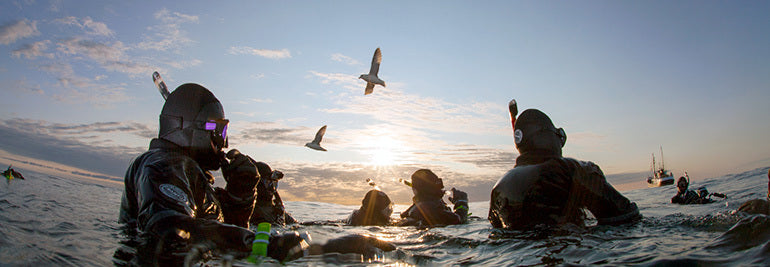
See what a diving expert wants you to know about SCUBA
It’s not suppose to hurt your ears
When I was a kid I dreamed about diving, but my ears and sinuses screamed in pain – but when you take a Scuba class you learn to equalize naturally. Diving should never be painful. Your ears hurt because of the effects of pressure – the volume of air spaces within your body are compressed by water pressure over your head. You need to adjust that change with equalization.
You’re not breathing what you breath on land
Most people mistakenly assume there’s an oxygen tank on your back. You’re not breathing oxgygen, you’re breathing what you’d breath on land, and that's 21% percent oxygen, 79% nitrogen and a few trace gasses – but it’s dried, filtered clean, and compressed. Technical divers may use exotic gasses like helium to conduct dives at much deeper levels, but recreational divers just breath, well, normal air.
How long can I stay under water, really?
That’s a tough questions! There’s a lot of factors that limit your dive. Important ones being how much air is in your tank and how deep you go. Recreational divers generally can ascend to the surface at any time during their dive with no need for de-compression stops on the way.
Uhhh, what are decompression stops?
Technical divers have an artificial ‘ceiling’ over their heads (or sometimes a real one). Artificial ceilings are created when you go deep or very long, and your body needs to time climatize and release gasses that have accumulated in the body. If you go higher, faster, you could get injured – it’s called decompression sickness (colloquially known as 'the bends’) and trust me, you don’t want to deal with it – symptoms include joint pain, headaches, neurological damage, even paralysis. But let me be clear: this is totally, 100% avoidable.
How safe is diving?
Statistically, diving is incredibly safe if you’re following the rules and know what’s going on. You’re more likely to suffer a fatal bowling injury! But you need to follow the sea conditions and weather, and follow the basic safety rules you learned in dive class.
Will my whole body wrinkle up like my fingers after too long in the pool?
Ha! That’s great, but no. You won’t come out looking like a prune.
What’s a dive algorithm?
A dive algorithm is a complex mathematical formula that attempts to simulate how the human body deals with the inert gas in scuba diving on descent and during the dive. It predicts how the body will off-gas that same inert gas to allow us to find the proper schedule for a safe ascent back to the surface. See the above statement about ‘decompression stops’.
Give us a sample dive profile?
A ‘dive profile’ is basically a map of how deep you go when (and for how long) during a dive. A rec-diver going to 30m of depth has only of 20min of bottom time before they ascend back to the surface with no safety stops. Alternatively, tech divers will spends hours at 30m, using rebreathers and different gasses to complete that dive, and they’ll have a number of decompression stops to come back to the surface.
Are there any long-term effects?
The current algorithms keep us in the safe envelope of exposure. I’ve got 7,000 dives, and sometimes am on projects that extend for months, diving every single day. Researchers are still looking at us (by that I mean people like me!) to see if there’s any long term effects. Decompression stress – the same thing that astronauts deal with, just on lesser levels – is of great interest to physiologists – there’s a lot of questions about how that stress expresses itself on bones or tissue over very long periods of time. But I’m 52 years old, and can still swim circles around most 20 year olds, so I’m not too worried for the long run!
Stay tuned for more articles about the science of diving.
READ MORE
Explore a frozen world with Jill Heinerth
How deep can we go?
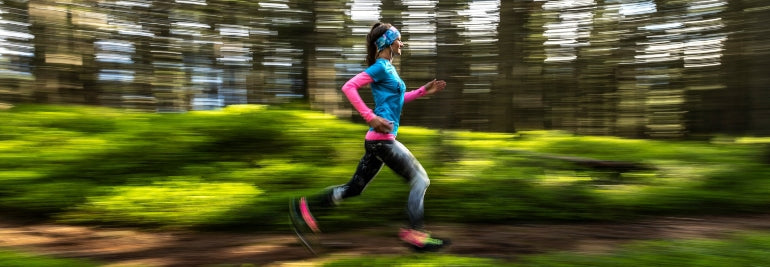
5 tips to be a consistent runner
The feeling of freedom, of almost floating across the earth, is one of the main reasons we run. Those sometimes elusive runner’s highs make all the hard training worthwhile.
Getting to that point, when running feels effortless and liberating, takes consistency. Without it, we stay at a level that involves more perseverance than inspiration. Becoming consistent takes our running to another level.
In this first article in the Suunto Summer Challenge on Map My Run, happening throughout July, we explore what it takes to become a consistent runner. Read on for sage advice from the Marathon Whisperer, and get out training to reach new badge levels to be in to win one of four Suunto 7 GPS smartwatches.
To participate in the Suunto Summer Challenge all you need to do is sync your Suunto App with Map My Run, and start logging workouts. Full details here.
© Graeme Murray/Red Bull Content Pool
Ask the Marathon Whisperer!
Runner and coach Denise Sauriol – nicknamed the“Marathon Whisperer” – is here to help you find your running consistency. No one can question her dedication – she has run 117 marathons! Denise is a certified running coach and the author of the book, Me, You & 26.2, a guide to running your first marathon.
Whether you are just getting started with running or coming back after taking some time off, here are five tips to ignite your training and keep the fire burning!
Plan your training
Training plans provide focus, but it’s hard to design one without having a race or a goal on the horizon. Running without having a goal to shoot for is like studying without having to take a final exam. You are going to be more likely to run if you know you have a race or goal down the road. Your plan will give you short term objectives (daily runs and recovery days) and a long term goal to focus on.
Extra tip: Make sure your plan isn’t too easy or too hard, but just right.
Make running a priority
Running or any exercise for that matter is an investment in yourself. Make your runs official appointments in your calendar. Treat it just like you would a doctor’s appointment. If you don’t schedule it and make it official, you are more likely to let other to-dos take up your run time. To minimize the chance of missing your run, lace up and head out the door first thing in the morning. Even better is to head out for your run before looking at your phone in the morning.
Make a public commitment
Once you sign up for a race or set yourself a goal, tell your friends and family about it. Without them even knowing it, they will be accountability buddies for you as they are likely to ask you about your training throughout the season and ask you about race day. Knowing these questions could come next time you see them will keep you on your toes.
Find a running partner
This not only helps the miles go by, but also helps to keep you more accountable. If you are new to running and or new to your area, check out your local running store as most of them have group fun runs where you are bound to find someone with a similar pace. If you can’t find anyone to run with, bring an e-partner with you to help the miles go by, for example, music, podcasts or audibles.
With the Suunto 7 GPS smartwatch you can connect your headphones to your phone and control music and other audio – adjust volume, pause and skip tracks – straight from your wrist without taking your phone out of your pocket. You can also listen without your phone – the Suunto 7 can store thousands of tracks so you can play your favorite songs or other audio on the go.
Before your next run, load up the three playlists on our Spotify channel prepared by the Mambo Brothers: chilled, upbeat and intense!
Be packed and ready
Whether you are running first thing in the morning, during your lunch break, or after work, pack your running gear the night before so it’s one less thing to worry about when you are ready, set and raring to go!
This article is the first in the Suunto Summer Challenge on Map My Run this July. The challenge is all about creating a workout routine and sticking with it!
Lead images:
© Joerg Mitter for Wings for Life World Run
Photo by Andrew Heald on Unsplash

D.I.E.T (disaster imminent every time?), and three unchanging principles of nutrition for athletes
What’s the difference between eating healthy and eating right? For athlete, entrepreneur, coach and nutrition expert Dr. Rick Kattouf II this question cuts right to the heart of the debate on nutrition.
“There is a huge difference between eating healthy and eating right,” Kattouf says. “There is a huge difference between feeding the body and fuelling the body. I tell people to stop eating healthy, and they freak out.”
Rick has designed his own line of nutritional supplements. © Rick Kattouf
An example of what Kattouf calls a healthy meal is grilled chicken on a bed of greens, or a bowl of vegetables, beans with a little tofu. While Kattouf agrees these meals are healthy, he says that doesn’t make them right. Eating right is another matter.
Kattouf has credentials to back up his perspective on nutrition for athletes: during four years of pre medicine study and four years of studying optometry he learned about human physiology, pharmacology and biochemistry. The three-time age group national duathlon champion and all-round fitness freak has the performance experience to back up his approach, too.
“There’s a lot of people out there chasing one diet after the next, and one thing I am is an anti diet guy,” Kattouf says. “I trademarked the acronym for the word diet: disaster imminent every time®. That’s what a diet is. My nutrition principles haven’t changed since I was at college. And now I’m 47. Reason being is that human physiology is human physiology.”
Rick Kattouf’s unchanging principles of nutrition
Photo by Danielle Cerullo on Unsplash
When Kattouf starts coaching a new athlete he always asks the same three questions: what time of day do they get out of bed, what time of day they work out and what time do they go to bed. Being clear about this is where a proper nutrition plan begins.
“But what do most people try to focus on? Calories. It’s not about calories in and calories out. It’s all about three key principles: the proper fuelling frequency, the proper fuelling timing, and the right balance of carbohydrates, protein and fat in every meal and snack.”
Photo by Brian Erickson on Unsplash
1. The right ratio
Whether it’s a pro athlete, an age group runner or a morbidly obese person he’s coaching, Kattouf sticks to the same basic meal principle; each meal should consist of about 50 to 60 percent carbohydrates, around 15 to 25 percent protein and between 15 to 25 percent fat.
“For decades we’ve been living with this concept of a higher protein, lower carb diet,” he says. “The carbs have got the dunce hat on and have been shoved into the corner. But what is the only food that the brain can use as fuel? It’s sugars, glucose, carbs, and when we cut those out we’re going to reduce mental acuity, and not get the results we want.”
He says it’s this proper balance of “C-P-F” that plays an important role in stabilising blood sugar, reducing sharp spikes and drops, and helping the body reload. They also help to assist in repairing muscle damage, building muscle, cartilage and bone. These are “macronutrients”, meaning the body needs a large amount of them (and in the right balance) compared to micronutrients like vitamins and minerals.
“There are three things we are going to ask ourselves before every meal or snack: what is my carb, what is my protein, what is my fat. If we can answer all three of those we are moving in the right direction,” Kattouf says
2 & 3. Fuelling frequency and timing
These two are separate, but closely connected. The proper frequency is about how often to eat throughout the day. For optimal performance Kattouf says every two and a half to three hours upon the first snack at waking.
“Fuel your body immediately upon waking, not 30 minutes after, not 60 minutes after, immediately upon waking and then every two to three hours thereafter throughout the day, depending on your goals,” Kattouf says.
The proper timing is about fuelling before, during and after a workout. Having a well balanced snack immediately before a workout and one immediately after is a good start. Especially for endurance athletes, fuelling during is equally important.
Rick’s quick and easy balanced meal
2/3 cup oats1 slice whole grain bread1 TBSP peanut butter3 egg whites
Breakdown:
457 calories52% carbohydrate23% protein25% fat
READ MORE
FUELLING THE ENGINE: A COMMONSENSE APPROACH TO NUTRITION
FUELLING THE ENGINE: TALKING NUTRITION WITH ULTRA RUNNER LUCY BARTHOLOMEW
FUELLING THE ENGINE: TALKING NUTRITION WITH TRIATHLETE MEL HAUSCHILDT
FUELLING THE ENGINE: TALKING NUTRITION WITH TRAIL RUNNER EMELIE FORSBERG
Lead photos by rawpixel and Eaters Collective on Unsplash
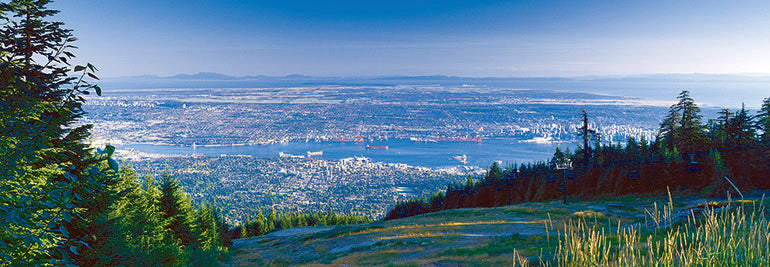
Simon Donato takes on The Grouse Grind
The Grouse Grind is an iconic trail up the face of Grouse Mountain, overlooking Vancouver, British Columbia, Canada. The trail is 2.9 kilometers long, with an elevation gain of 853 meters. Locals often refer to the trail as “Mother Nature’s Stairmaster.”
On Tuesday, June 20th Suunto Canada will be sponsoring the Suunto Multi-Grind Challenge. From dawn till dusk, racers will challenge each other to achieve the most Grouse Grind ascents in a one-day period. The current Multi-Grind Challenge record is 16 ascents! Or, over 13,500 meters of climbing!
What appealed to you about this race?
I’m attracted to this race because it’s got all the elements that I enjoy: Long day, vertical terrain, legendary route, and I know that I’ll get to face some mental battles along the way. The Grouse Grind is such an iconic route that one lap just doesn’t do it justice.
Any tips for tackling the Grouse Grind? There’s a lot of steps…
haha - Indeed. As with most really huge endurance challenges, this race will be won in the mind - not the legs. My goal is to keep the steps smooth and natural, not to push the pace too hard in the early stages, and try to keep it comfortable for as long as possible.
Have you ever done anything like this before?
I’ve never done a “stair climb” or “vertical” challenge per se, but I’ve put in many long days in the Canadian Rocky Mountains, both hiking and running for fun or chasing FKTs.
Any special strategies for tackling this much ascent in such a short time frame?
This race is unique because you get to rest on the descent by taking the Grouse Mountain Skyride, so trying to time things in such a way that you are not waiting for a tram car is critical. Eating, gear changes, etc., will all have to be done on the tram ride between ascents. One of the main goals is to climb at a very steady tempo - so that my splits are extremely similar lap - lap and avoid wasted time.
What will be your nutritional plan for the race?
My plan will be to take in as many calories as my body can handle - especially late in the race as that’s when I typically fade due to fatigue and a reduced desire to eat. Fatigue makes eating harder, and not eating enhances fatigue -it’s something I’ve struggled with in the past. In terms of calories - I’m going for as much real food as possible - and of course lots of Stoked Oats.
What performance metrics will you be focusing on during the race?
My biggest goal will be to maintain even splits…even if it feels painfully slow in the early stages. There is no benefit to reaching the summit after a hard push only to wait for the tram to arrive and take you back down.
Most importantly, the current record is 16 Grinds, how many do you think you can do?
Ha ha, the million dollar question. I would be happy with 14, and thrilled with 15.
What keeps you motivated during the climbs? How do you stay focused on the trail?
Motivation has always been about doing my best. It’s a question that I ask myself regularly during tough events and helps me push through the most difficult spots. In this case, I won’t be motivated by an absolute number, but more in maintaining a specific pace, and sticking to a well-designed nutrition plan.
How does your Suunto help you succeed in events like these?
I’ve always loved Suunto products - ever since I got into adventure racing in 1998. I think the bottom line is that I trust Suunto products - from watches to compasses and in a race where pacing is critical to success, having a watch (Suunto Spartan) that I trust gives me peace of mind. I know the watch will go as long as I do on the day and give me the metrics that I need to do my best - simple as that.
Any advice to newcomers of the Grind?
The Grind is an epic climb for many reasons, and tackling the Multi-Grind Challenge will move that needle well into the redzone. The most important elements to success in my opinion are setting goals (pacing, duration, etc.), managing nutrition, and adhering to a well thought out race plan. Really difficult events will challenge even the most hardened competitors and if there is no plan, or commitment to achieve a goal, then it’s always easier to throw in the towel when the going gets tough. Little things like appreciating the experience when you’re riding a high, to understanding that the lows don’t last forever will help pull athletes through this test!
Image of Simon Donato © Luis Moreira/Adventure ScienceGrouse Mountain images © Grouse Mountain
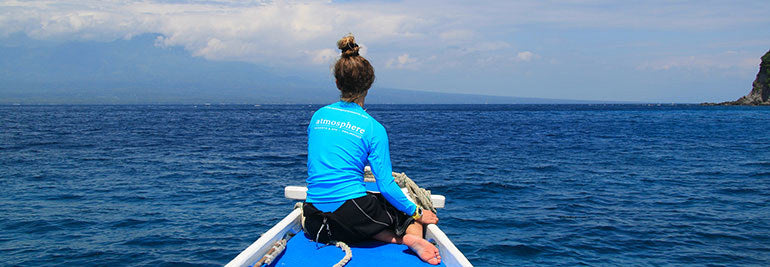
This is what the perfect dive trip looks like
Last month, we sent Suunto #DiveWithMe winners Anna Starup and Theresa Thorp to the Philippines for a little dive adventure in paradise at Atmosphere Dive Resort – suffice it to say the girls enjoyed themselves. Now that they are answering e-mails again (because let’s be honest, we wouldn’t be answering e-mails on a dive vacation either) we pinged them with a few questions about the trip – and of course, got some pics.
Anna, this was a learning experience for you.
Anna: Yeah – I did my final certification in the Philippines after preparing at home in Denmark using online courses. Diving just caught me right away. In retrospect I’ve thought about why I didn’t take my open water earlier. Diving is definitely going to take me (and Theresa) to places in the world I’d never considered before.
Best single dive of the trip?
Anna & Theresa: That’s actually quite a hard question! The dive sites differed a lot and each had amazing aspects about them. Perhaps a dive at Apo Island where we saw a dozen turtles that played around with us. Or a dive where a blue-ringed octopus saw its reflection in Anna’s dive instructor’s camera and attacked it! At the same dive we saw 4 species of Octopus’ and a lot of cool frogfishes.
Of course, you didn’t spend every moment on the boat…
Anna & Theresa: Atmosphere quite is a little piece of paradise. Rooms, dining area, dive shop, beach – just amazing. We’ll have to mention the food here as well. Besides diving, eating was definitely a highlight every day! The people at Atmosphere were a huge part of the amazing experience we had. Everyone seemed like a little family, joking around, stopping for a chat, taking interest in each other’s (and our) lives.
You made such good friends, you even got a nickname…
Anna & Theresa: Someone from the dive crew, jealous of our cool Suunto D4i, nicknamed us “The Suunto Girls”, which kind of stuck to us for the whole trip. Not the worst nickname, right? We also have to send a special “thanks” to Ulrika, Marco and Daniel from the Atmosphere family, who were the main reasons why this trip became such an irreplaceable and spectacular adventure. We’re still feeling completely and utterly high on life, thank you!
And you even got into the jungle!
Anna & Theresa: On our way to the resort we met up with Theresa's brother and friend who is currently backpacking their way around Asia. We woke up at 5AM for a short jungle hike which led us to the most stunningly beautiful, lagoon called Kawasan Falls. Being there early meant having the waterfall all to ourselves for hours! A ton of fun swimming, cliff jumping and playing around in the lagoon before we continued on our journey to Atmosphere Resort. We also got to explore the Chocolate Hills, joined a dinner cruise at Loboc River, saw the Tarsier Sanctuary at Bohol Island, and visited Osmena Peak, the highest peak at Cebu Island. All spectacular sights and irreplaceable small adventures.
Do you feel more confident underwater?
Theresa: Getting to share the incredible underwater world with Anna for the first time was magical! We had so much fun during her Open Water Course, and later during our fun dives.
Anna: I had studied quite a lot of theory, but all of it made sense when I got to try it in the water. I wasn’t sure how much I was going to remember if a situation occurred where I actually needed it, but during my very first dive for instance, my mouthpiece came off. Without knowing exactly what was going on, I just grabbed my reserve. So I think some of the exercises “internalizes” pretty fast.
Can you name some of your favorite spots for future visitors?
Anna & Theresa: The "turtle" divesite at Apo Island was called Rockpoint West. The divesite where we met the blue-ringed octopus was called Secret Garden although we called it Octopus' garden, as we saw a lot of octopus there. The whaleshark spot was called Oslob.
Are the Philippines as a must-go dive destination? Theresa: Absolutely – especially if you're into muck and micro diving. It caught me right away, and I'm still in awe that critters, like the one we met, actually exist in real life! I was especially fascinated by the many different species of frogfish, nudibranch and mantis shrimp.
Would you go back?
Theresa: Definitely! The amazing dive sites and spectacular nature are sure to drag us back, and besides, we need to reunite with the amazing crew at Atmosphere Resort.
What other spots in the world are next on your must-dive list?
Theresa: Since this was my first time diving in Asia, I'll have to get back to explore some more! Right now places like Komodo, the Gili islands and the Maldives is on the top of my must-dive list. Galapagos has also been on the top of my list for quite some time now.
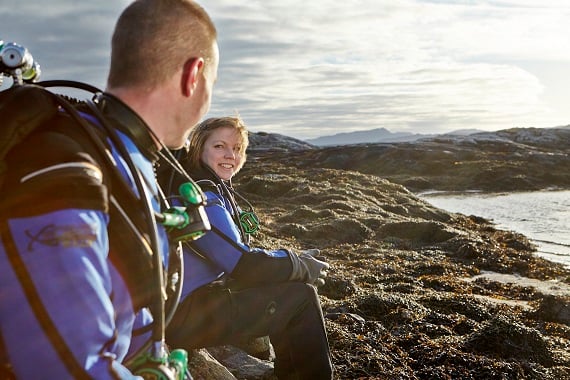
Suunto's next generation dive computer
What’s next for Suunto dive computers? That question will be answered this fall when we unveil our latest creation for divers seeking the best. This advanced, large display dive computer with a bright color screen grows with you.
Suunto has developed many diving innovations in the last 50 years together with divers - including the first dive compasses and early dive computers. Our next dive computer continues this tradition of co-creation with you - our diving family - and we thank you all for your valuable feedback.Creating reliable products designed for the harshest of elements is a part our near 80-year heritage. The next great Suunto dive computer adds another chapter to the extraordinary Suunto story.
Want to know more? Sign up here and you'll be the first to receive additional details about this exciting new product.

Suunto's next generation dive computer
What’s next for Suunto dive computers? That question will be answered this fall when we unveil our latest creation for divers seeking the best. This advanced, large display dive computer with a bright color screen grows with you.
Suunto has developed many diving innovations in the last 50 years together with divers - including the first dive compasses and early dive computers. Our next dive computer continues this tradition of co-creation with you - our diving family - and we thank you all for your valuable feedback.Creating reliable products designed for the harshest of elements is a part our near 80-year heritage. The next great Suunto dive computer adds another chapter to the extraordinary Suunto story.
Want to know more? Sign up here and you'll be the first to receive additional details about this exciting new product.
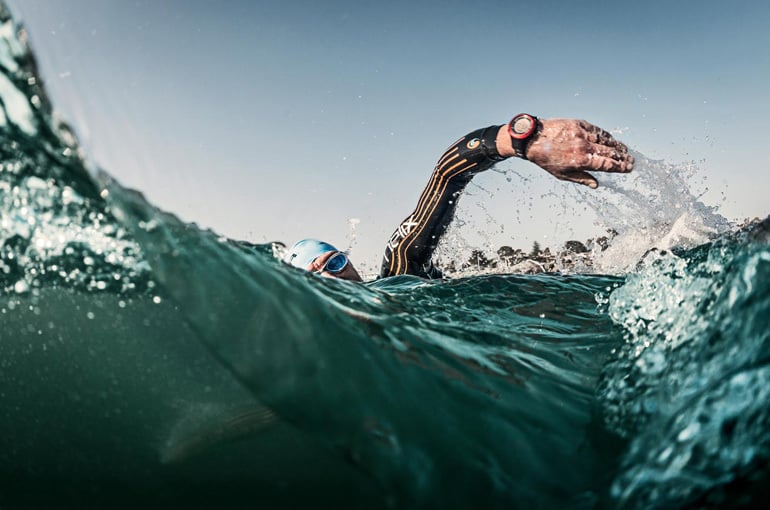
Conrad Stoltz's open water swimming tips
Doing you swimming drills in the pool is important, but nothing beats the outdoors, says Stoltz.
It's one of the biggest issues for triathletes and something of interest to anyone who loves open water – how to improve your technique. As everyone knows – and often dreads! – being disciplined about swimming drills is essential to improve your performance. But not everything can be learned in a pool, says Conrad Stoltz.
“Good open water swimming comes from lots of practice,” says the multiple XTERRA champion.
“You have to learn different kinds of open water. Lakes are easy, but ocean swims have waves, currents and sand bars, and river swims are tricky because of currents.”
He says there's no substitute for getting out there into the wild and just getting the feel of different water types.
Of course, when it comes to actual swimming race preparation, he says the trick is to swim as often as possible in a group. You should also ask yourself important tactical questions. “Where to position yourself at the start? How to pace yourself to start fast without blowing up? How to draft, where to postition yourself around the buoys?” he says.
“Building fitness in a pool with a swim squad is good,” he adds, “but I try to spend as much time as possible swimming open water. There is no substitute for open water – plus it's usually more fun than staring at the black line!”
Conrad's top 3 tips:
Swim outside in different conditions – lakes, rivers and the sea.
Swim in a group and practise drafting.
Plan your race tactics.
Suunto introduces International Warranty
Suunto launches today an added customer benefit by introducing International Warranty for all Suunto products. With the International Warranty, all Suunto products in warranty enjoy warranty repairs at Suunto authorized service centers worldwide.
In practice this means that Suunto customers can have their Suunto product repaired under warranty in any Suunto authorized service center around the world, not just in the country where they purchased the product. The international expansion of Suunto's warranty provides more flexibility for customers who e.g. bought a Suunto product when traveling or have moved to another country after purchase.
Suunto exists to enable and offer additional value for the sports and adventures of our customers, who expect the best of their gear – every day, in any conditions. Suunto support team can be contacted through the phone numbers found on the Support page or by submitting a question. Our repair and support services are rated very high by our customers. Suunto International Warranty completes this service offering. "Our customers have been heard, we are really glad to answer their need with the International Warranty. This is another important step in our purpose to offer a premium and personal service experience to every customer", explains Kato Lo, Service Network Manager from Suunto Customer Care.
The International Limited Warranty applies to all Suunto products that are currently under warranty. To qualify, customers need to register their device at register and to present a purchase receipt upon delivering their device to the service center.
For more information and Suunto Warranty terms, see support.
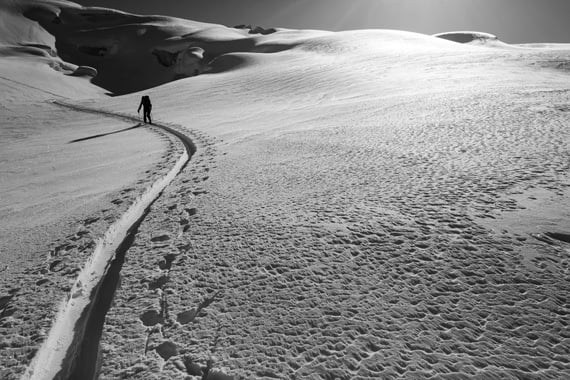
Greg Hill's mountain moves
In the space of 31 days he skied to the equivalent of space and back. Last month Greg Hill clocked an incredible 100,628m – more than 10 times the height of Mt Everest. For anyone curious to see how Canadian ski mountaineer achieved the feat, below we show his daily gain, which reveal his super-human performance. Day after day, Greg skied for up to 10 hours to cover between 3,000m and 4,000m of vertical. Of course this doesn't answer the bigger question of how he was physically able to do it and for that only Greg can provide the answer. “It was a big mission,” says the 38-year-old Suunto ambassador, recovering at his home in Revelstoke, British Columbia. “It was as hard as anything I've done, waking up every morning and getting out there.” But he says the knowledge that at the top of every climb lay an awesome descent kept him going. “It was the best human powered powder month ever! It was ridiculous. This was 97% great skiing!”Check out where he went, his daily climbs the full stats of Greg's March Madness project on the links below. Looking for a highlight? Greg says his best day was March 11th. “I climbed three different summits and five different great lines,” he says.
And the worst? March 6th when warm weather conspired to create nightmare ski-touring conditions. “My skis were weighing probably 20kg there was so much snow stuck to them,” says Greg. “That was as bad as it was.”
March 1st: 4,255m
March 2nd: 4,648m
March 3rd: 4,087m
March 4th: 4,125m
March 5th: rest day
March 6th: 3,950m
March 7th: 4,141m
March 8th: 2,943m
March 9th: rest day
March 10th: 4,264m
March 11th: 4,340m
March 12th: 3,957m
March 13th: 4,518m
March 14th: rest day
March 15th: 4,186m
March 16th: 3,970m
March 17th: 4,127m
March 18th: 2,287m
March 19th: rest day
March 20th: 4,398m
March 21st: 3,793m
March 22nd: 3,812m
March 24th: 3,843m
March 25th: 3,050m
March 26th: 3,048m
March 27th: 4,290m
March 28th: 3,869m
March 29th: 3,973m
March 30th: 3,421m
March 31st: 3,167m
Image: ©Bruno Long
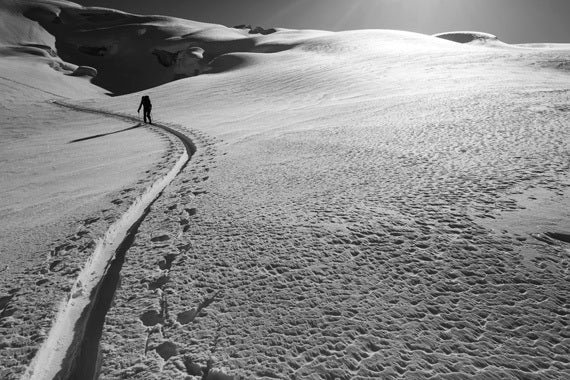
Greg Hill's mountain moves
In the space of 31 days he skied to the equivalent of space and back. Last month Greg Hill clocked an incredible 100,628m – more than 10 times the height of Mt Everest. For anyone curious to see how Canadian ski mountaineer achieved the feat, below we show his daily gain, which reveal his super-human performance. Day after day, Greg skied for up to 10 hours to cover between 3,000m and 4,000m of vertical. Of course this doesn't answer the bigger question of how he was physically able to do it and for that only Greg can provide the answer. “It was a big mission,” says the 38-year-old Suunto ambassador, recovering at his home in Revelstoke, British Columbia. “It was as hard as anything I've done, waking up every morning and getting out there.” But he says the knowledge that at the top of every climb lay an awesome descent kept him going. “It was the best human powered powder month ever! It was ridiculous. This was 97% great skiing!”Check out where he went, his daily climbs the full stats of Greg's March Madness project on the links below. Looking for a highlight? Greg says his best day was March 11th. “I climbed three different summits and five different great lines,” he says.
And the worst? March 6th when warm weather conspired to create nightmare ski-touring conditions. “My skis were weighing probably 20kg there was so much snow stuck to them,” says Greg. “That was as bad as it was.”
March 1st: 4,255m
March 2nd: 4,648m
March 3rd: 4,087m
March 4th: 4,125m
March 5th: rest day
March 6th: 3,950m
March 7th: 4,141m
March 8th: 2,943m
March 9th: rest day
March 10th: 4,264m
March 11th: 4,340m
March 12th: 3,957m
March 13th: 4,518m
March 14th: rest day
March 15th: 4,186m
March 16th: 3,970m
March 17th: 4,127m
March 18th: 2,287m
March 19th: rest day
March 20th: 4,398m
March 21st: 3,793m
March 22nd: 3,812m
March 24th: 3,843m
March 25th: 3,050m
March 26th: 3,048m
March 27th: 4,290m
March 28th: 3,869m
March 29th: 3,973m
March 30th: 3,421m
March 31st: 3,167m
Image: ©Bruno Long
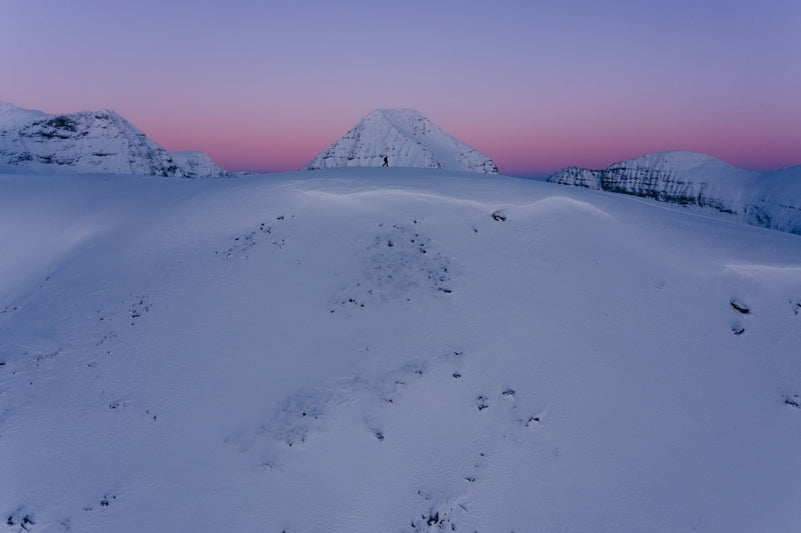
Calling winter sports fans: help researchers reduce avalanche fatalities
A first of its kind research project in Norway is inviting Suunto users to help them gain insights into how we make decisions in avalanche terrain, and what we can do to reduce avalanche accidents.
The Center for Avalanche Research and Education (CARE) at UiT the Arctic University of Norway wishes to follow 10 000 winter sports fans for 10 years to examine how we make decisions in avalanche terrain, and how we can all be safer.
To join the CAREpanel and help with this important, and first of its kind longitudinal study, you must be involved in a winter sport like skiing, snowboarding, ice-climbing, snowmobiling, hunting and so on.
Photo by Audun Hetland
How to contribute
You can contribute by joining the longitudinal study at www.carepanel.no and also by sharing your activity data with the avalanche researchers at CARE. To send your activity data to the researchers, go to the activity in Suunto app, tap the three dots on top right and select 'Export GPX workout'.
Why it’s important
Nine out of 10 fatal avalanche accidents are triggered by the victim or someone in their party. According to EAWS, the European Avalanche Warning Service, there were 130 avalanche related fatalities in Europe alone in 2020-2021. By understanding and improving decision making CARE aims to save lives.
Normal short term studies do not provide much in the way of insights into human factors and their impact in triggering avalanches. By following such a large number of people over time the CAREpanel research project will reveal how education or experience impact people’s perception of risk and their following decisions.
Photo by Audun Hetland
What’s involved
The carepanel consists of an introductory survey and a yearly survey. The surveys take about 15 minutes to complete. The CARE panelist will also be asked to join a GPS survey. If you share your GPS data you will get an offer to answer a few questions about the tour in avalanche terrain.
The researchers will run the GPS track through a terrain model and compare it with the current avalanche conditions from the warning service varsom.no. This will let them create a rough estimation of exposure risk under the current conditions. In the future the researchers also aim to provide feedback to the participants based on their GPS tracks.
Some participants may also be invited to join additional short studies. These are optional.
How to sign up
To become a CARE paneilist, first read important information for participants. Then complete the CARE panel recruitment survey.
Lead image: Jaakko Posti / Arctic Lines
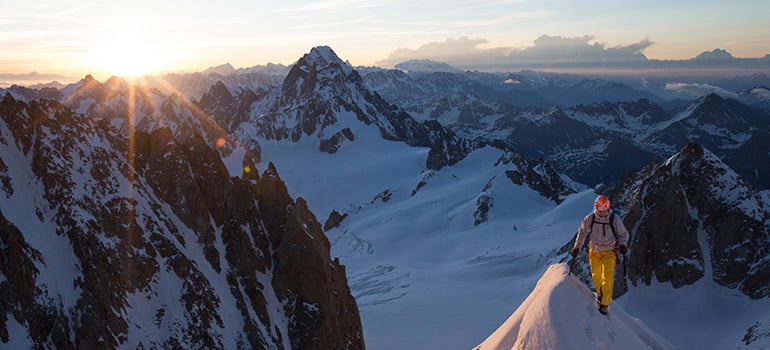
The Swiss Machine
Ever since his 2008 record-breaking solo speed ascent of the north face of the Eiger in 2h 47m 33s Ueli Steck has been regarded as one of climbing’s most spectacular talents.
Afterwards Steck declared he would dial back on the fast solo climbs that led to him being nicknamed the “Swiss Machine” but his climbing feats have continued to amaze and inspire. In 2013 he was back in the limelight after making an incredibly bold solo ascent of the south face of Annapurna (8,091 m) in 28 hours – a new record. The ascent won him the Piolet d’Or, one of climbing’s most prestigious awards.
“I was at the limits of my physical and mental ability. To go to such limits changes your consciousness, ” he said at the time. Climbers regard it as one of the most significant climbs in the Himalayas in a generation.
The older, smarter Steck is not the same climber he was as a daring youth, pushing the limits of human capability. “I feel a difference between now and 10 years ago,” he says. “My body needs more time to recover, and I have to be more careful with training. But I’m more confident, and this gives me a lot of freedom. But the fire still burns!”
As a purist, Steck climbs without using bottled oxygen and has so far summited five 8,000m peaks without doing so. Everest is one of those peaks, which, he says, was one of the most physically demanding undertakings in his life. “It’s out of the question for me to use bottled oxygen,” he says. “I either make the summit without it or I turn back, go home and train more.”
Steck is also noted for his rigorous and professional approach to training. He spends up to 30 hours a week working-out, running, climbing, cross-country skiing and doing endurance and strength work. He never travels anywhere without a pair of running shoes and is always scouting for something to get to the top of, whether a mountain in the distance or the top of a building if he’s city-bound, such as the One World Trade Center in New York City.
He says the Suunto Ambit is the perfect solution for both mountaineering and training. “It’s got everything I need in one package, whether I'm on an expedition in the Himalayas or on a hard one-day ascent in the Alps.”
But no matter what the route, Steck’s inspiration remains the same. “It’s the challenge of moving on in life,” he says. “I always want to try something I have not done before.”
Follow Ueli Steck's #82summit project here
Pictures by Jon Griffith Photography
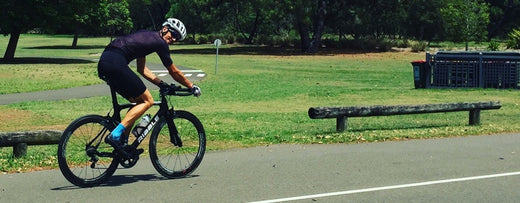
Meet the endurance super-couple aiming to do 100 triathlons in 100 days
John and Debi are calling it the Iron Century. John is doing the full Ironman distance and Debi (who gave birth to their son Ryder only seven months ago!) aiming for the half. They’re aiming to complete the challenge on the day of the Ironman Australia, in Port Macquarie on May 7th – and qualify for the Ironman World Championships in Kona at the same time. Crazy? Absolutely. We had a quick chat to find out just how crazy they actually are.
Where did you get the idea? And what makes you think you can do it?
We owe much of the inspiration to the Iron Cowboy James Lawrence, who completed 50 Ironmans in 50 states in 50 days. We said if he can do that, with all the travel and logistics and planning that go into it, we can definitely do the same route 100 times in our backyard.
So it’s the exact same route, every day?
For the first 95 days, yes – we’ll start off in the Prince Alfred Pool, just a few kilometers away from the house. They’ve reserved us our own lane every morning.
And the bike and the run?
From the pool we’ll hop in the motorhome, and head to Centennial Park, just a kilometer from our house. A loop of the park is exactly 3.8kms. I’ll do 48 laps on the bike, while Debi will do 24, and then the run will be 12 laps for me, and 6 for Debi.
Sounds brutal. How fast?
100 days is a long time, but my natural rhythm is pretty quick, so I can’t go too slow. I’ll be aiming for about 12 hours, Debi six.
And you’ll have some company.
Yep – our 7-month-old son Ryder loves being pushed in the pram, and he’ll join us for a bit each day. We expect he’ll get about 7,000km in over the course of the project – but he’ll even have his own separate Suunto watch recording his adventures!
There’s been some incredible logistics in planning this.
Yep – there’s no question success is all about recovery here. Foodora will be delivering a hot meal to our house every evening, so we won’t have to cook. Local physio Healthspace has lined up a crew of massage therapists to treat us every day of the challenge.
And for the last five days?
So after day 95, we’ll hop in the motorhome and head up to Port Macquarie, where we’ll both compete in the Ironman Australia in hopes of qualifying for Ironman Worlds in Hawaii later this year.
All we can say right now is best of luck – stay tuned to the Suunto Facebook or the IronCentury Facebook page for the latest updates on John and Debi’s insane trip challenge!
READ MORE
7 tips to keep a balanced training load
The right way to qualify for Kona

Head south for the perfect winter training camp
Winter may be here but that’s no reason to ease up on the training. Follow the example of the pros and migrate south for your warm weather fix. The only question is where to go. These five destinations should help you choose where to set your winter travel compass... Mallorca, SpainSmooth roads and long climbs – for many years, cyclists have been making the pilgrimage to the Mediterranean island of Mallorca and it's not difficult to see why. Just a two-hour flight from most of Europe. Mallorca’s terrain varies from flat coastal roads, to steep mountain passes. The longest climb on the island, the Puig Major, rises to 854m over the course of 14km. It's also the perfect photoshoot location, as these pics from our photoshoot below show.
Trail running in Mallorca on the Suunto photoshoot. ©zooom.at/Markus Berger
Tenerife, Canary IslandsBoasting the longest continuous climb in Europe – from sea level to 2,200m in one hit – Tenerife is the ideal place for those looking to improve their performance in the saddle. Offering dry and warm weather over the winter months, it's an ideal spot for migratory cyclists and triathletes. The island is also where the 2012 Tour de France winner Bradley Wiggins trained. But we can't promise it will put you in contention for the yellow jersey.
©Club La Santa, LanzaroteLanzarote, Canary IslandsThe favored destination of many a triathlete, Lanzarote is home to several training camps as well as one of the toughest Ironman events in the world. One of the reasons for its difficulty? Lanzarote is notorious for its wind, which has been known to destroy the spirit and soul of many a cyclist. Fortunately, the island is home to many world class Olympic pools, such as those at Club La Santa and superb trail running for when you want to recover from the bike. Stellenbosch, South AfricaIf you really want to escape winter, you need to head to the southern hemisphere. With its long open roads South Africa's wine growing region of Stellenbosch has been a favored pre-season training ground for many pros, including Jan Frodeno and Javier Gomez. Great riding in the mountains; top training facilities and pools in the University of Stellenbosch, and excellent wine of course.
Open water swimming in Mallorca. ©zooom.at/Markus Berger
San Diego, CaliforniaIt's no accident that San Diego is the birthplace of modern triathlon; the warm Pacific waters provide the perfect venue for open water swimming, trails abound for runners while inland you can find endless hills to crank out the miles in the saddle. Best of all, it has an average temperature of 21ºC and it's open all year round.
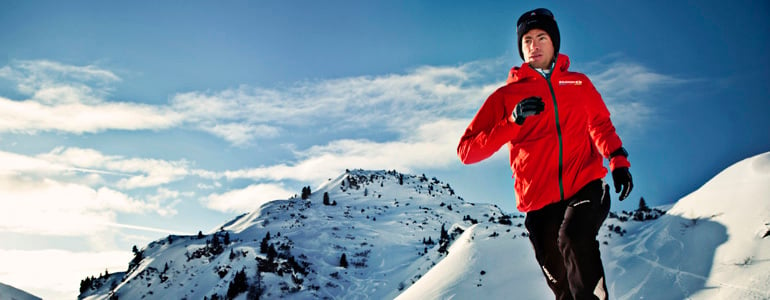
7 winter trail running tips
Dark mornings, icy roads, gusting winds and sub-zero temperatures ... running during the cold winter months can be a real challenge, sapping our motivation to get outdoors. But winter also can be an advantage, since it forces us to change our training patterns. So don’t get lazy just because it’s cold outside. Here’s how to stay motivated to train outdoors through the winter...
Follow Kilian's example:
Don't run! The world's top trail runner does not run over winter. “I spend half the year running and half the year skiing,” he says. “I don't run in winter. It's good to make a break and try other sports. If you live where there's snow, it's better to go cross-country skiing or ski mountaineering. Running in the snow can be good,” he adds “but you need to take care because the muscles work differently and you can pick up injuries.”
Gear up
There's no such thing as bad weather – just the wrong clothing, so goes the adage. Since your feet are the most important, it makes sense to look after them. Gore-tex lined running shoes are ideal for snow and wet conditions. When there's snow and ice, wear shoes with spikes.
Work on your style
No, we don't mean which gilet to wear – your running style. If you're running at night and on trails, speed work is out of the question. So it's a chance to slow-up and concentrate on your technique and work on your form so you're more efficient and less injury prone.
Don't overdress
It's temping to put on all the layers before heading out the door but even in the coldest conditions your body will still warm up and there's nothing worse than over-heating in the cold as that dampness will chill you the moment you stop. Head out the door a little cold and start off easily so you warm up gradually. Consider taking a running rucksack to carry an extra layer and survival extras like phone and energy food.
Track Back
With your Suunto watch you never need to worry about getting lost and failing to make it back home. If you lose your way in the dark, simply hit Find Back on your Suunto 9 and let your watch show you the way home.
Run to time rather than distance
Plan a time-based training program, meaning that workouts are prescribed in minutes rather than kilometers. This recognizes the variability of running conditions due to weather. When it's cold and slippery, it's hard to maintain the same fast pace you might in the spring or fall.
Go inside
Indoors isn't so bad and a bit of training at the gym can really improve your running fitness and overall strength. Think about signing up to a core-strength building class like Pilates or circuit training.
Lead image: © zooom.at/bergermarkus.com
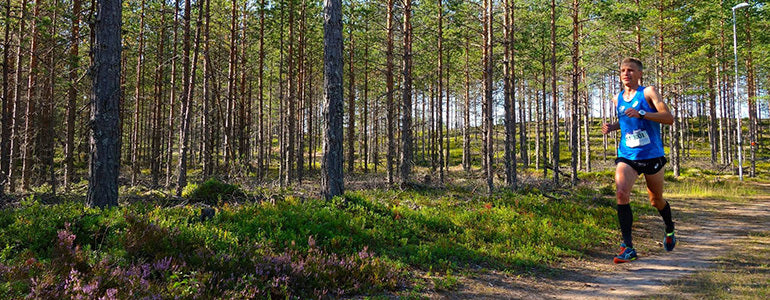
Is this the run of the summer?
Earlier this year, Jonas Buud, an amateur runner from Sweden, was laid up with a stress fracture in his hip bone. Things weren’t looking good; his recovery meant walking instead of running. But he had his eyes on his local race and decided to do it anyway, despite only two months’ of running on his legs. It was the 90 km Ultravasan, which follows the route of the famous Vasaloppet cross-country ski race. Not only did he win, he did it with some style, averaging a pace of 3’49 per kilometer for 90 km on an off-road course that packed an ascent of 872 m. We had one question:
That’s a 2h 40m marathon time. How did you sustain for 90km!?It’s crazy! I didn’t know my shape as I had not run much. The plan was just to follow others at the start. Max King, the 2014 100 k world champion was also running. The plan was just to follow him for as long as I could.
Talk us through the raceI thought I was running a bit slow in the beginning and I wasn’t checking my speed, but I did the first 5 km in 20 min, which was not so slow – and it was uphill!
“I couldn’t slow down. My legs just continued running.”
When did you realise you were doing well?The first 30 km is not so technical. It’s fast. It’s then a bit hilly at the halfway mark of Evertsberg, the sprint prize is also there, so Max took that one – he was running really fast. He then stopped to fill up some water but I continued through the checkpoint. There’s then a really long descent, the fastest part. I left Max and just continued at the same speed.
And you kept up the same pace? At 25 km to go, I thought, ‘Oh maybe I’m going too fast; I should slow down – I don’t want to run faster than a 4 minute km’, but I couldn’t slow down! It was a really nice run the whole way and I was in the shape of my life. My legs just continued running.
What a turnaround for you! It’s been a strange season. I got a stress fracture in December and could not run for six months. My first run was 1 min walk, 1 min run which I increased every week. My first 30 min run without stops was in late May.
You came late to running as well? Yes, I started really late although I've been orienteering since I was 10. I did my first marathon aged 30 in New York [2:36] where I met some other runners who told me to go on a training camp with them in Portugal. There I heard about the Swiss Alpine Marathon. I thought it would be too tough but I won. [He’s since won it eight times in a row!]
The finish must have been special?The year before was one of my best races ever [6:02 h]. Under six hours can be really tough. I had 5k left and I started to see what time I should have. I thought it can’t be true it’s too fast. It was one of the best moments as a runner because the history of the season, it’s also my hometown and a lot of people were at the finish.
What’s your training secret? I just run!

The wait is over: Suunto launches the EON Steel
The next generation dive computer is here, offering full customization and amazing color screen.
What's next for dive computers? That question has come a little closer to being answered today as market leader Suunto unveils the Suunto EON Steel, the first fully customizable dive computer. It's so intuitive it takes ease of use to a new level.
Full customizationWith Suunto CustomDisplay™, you can tailor your EON Steel so that it shows exactly what you want. You can choose from a traditional text-based interface or a graphical view, and customize up to five different displays with Suunto DM5 software, the program that transfers your logbook data to your computer for detailed analysis.
Unrivalled clarityThe EON Steel also offers divers unrivalled clarity thanks to its new, innovative wide-angle BrightSee™ screen. The brightness, high color contrast and easy handling mean the display can be read in all conditions, whether you're diving in shallow and light waters, or deep and dark ones.
Comments Mika Holappa, Dive Business Unit Director at Suunto: “We are delighted to launch the Suunto EON Steel, which is the result of our desire to produce the best possible diving computer for active divers. Its customization possibilities and ease of use make it ideally suited to every diving occasion.”
Diving with you for years to comeThe Suunto EON Steel will grow with you as your diving and skills evolve, thanks to the way you can customize it to your needs. With user updatable software, including a free fixed point CCR upgrade in 2015, it will dive with you for many years to come, whatever diving you're into. It comes with the choice of a strap or bungee attachment so it can be physically customized as well.
The Suunto EON Steel uses the highly advanced Suunto Fused™ RGBM algorithm to maximize your dive time. When used together with the new Suunto Tank POD, you can get tank pressures from multiple PODs with just a glance at the wrist. The EON Steel is rated to 150 m and offers a dive time of 20-40 hours after one charge – meaning it's ideal for those week-long liveaboard trips.
Finland-based Suunto has developed many diving innovations in the last 50 years – including the first diving compass and early dive computers. Creating reliable products that are tested and designed for the harshest of elements has been a part of its heritage for almost 80 years.
The Suunto EON Steel builds on that tradition. The bezel is made from brushed stainless steel while the housing uses reinforced composite. The Xensation™ glass display is also built to withstand every diving situation. Inside and out the Suunto EON Steel is made with the most advanced components, making it extremely durable and accurate. It's another reason why the Suunto EON Steel makes the perfect partner for your diving adventures.
The Suunto EON Steel will be available in spring 2015, at the recommended price of €999. The Suunto Tank POD is available at €299.

The wait is over: Suunto launches the EON Steel
The next generation dive computer is here, offering full customization and amazing color screen.
What's next for dive computers? That question has come a little closer to being answered today as market leader Suunto unveils the Suunto EON Steel, the first fully customizable dive computer. It's so intuitive it takes ease of use to a new level.
Full customizationWith Suunto CustomDisplay™, you can tailor your EON Steel so that it shows exactly what you want. You can choose from a traditional text-based interface or a graphical view, and customize up to five different displays with Suunto DM5 software, the program that transfers your logbook data to your computer for detailed analysis.
Unrivalled clarityThe EON Steel also offers divers unrivalled clarity thanks to its new, innovative wide-angle BrightSee™ screen. The brightness, high color contrast and easy handling mean the display can be read in all conditions, whether you're diving in shallow and light waters, or deep and dark ones.
Comments Mika Holappa, Dive Business Unit Director at Suunto: “We are delighted to launch the Suunto EON Steel, which is the result of our desire to produce the best possible diving computer for active divers. Its customization possibilities and ease of use make it ideally suited to every diving occasion.”
Diving with you for years to comeThe Suunto EON Steel will grow with you as your diving and skills evolve, thanks to the way you can customize it to your needs. With user updatable software, including a free fixed point CCR upgrade in 2015, it will dive with you for many years to come, whatever diving you're into. It comes with the choice of a strap or bungee attachment so it can be physically customized as well.
The Suunto EON Steel uses the highly advanced Suunto Fused™ RGBM algorithm to maximize your dive time. When used together with the new Suunto Tank POD, you can get tank pressures from multiple PODs with just a glance at the wrist. The EON Steel is rated to 150 m and offers a dive time of 20-40 hours after one charge – meaning it's ideal for those week-long liveaboard trips.
Finland-based Suunto has developed many diving innovations in the last 50 years – including the first diving compass and early dive computers. Creating reliable products that are tested and designed for the harshest of elements has been a part of its heritage for almost 80 years.
The Suunto EON Steel builds on that tradition. The bezel is made from brushed stainless steel while the housing uses reinforced composite. The Xensation™ glass display is also built to withstand every diving situation. Inside and out the Suunto EON Steel is made with the most advanced components, making it extremely durable and accurate. It's another reason why the Suunto EON Steel makes the perfect partner for your diving adventures.
The Suunto EON Steel will be available in spring 2015, at the recommended price of €999. The Suunto Tank POD is available at €299.

Fuelling the engine: talking nutrition with Emelie Forsberg
For an increasing number of people today nutrition isn’t only a question of what food we eat, it’s also about where that food has come from and how it’s been produced.
When she's not in the mountains, you can find Emelie in her garden or preparing delicious meals. © Matti Bernitz
Eating seasonally
For Swedish mountain running champion Emelie Forsberg sustainability plays an important role in her decision making around diet. For this reason Forsberg eats seasonally. “In the winter, for example, I try not to buy fruit or anything transported from far away places,” she says. “For me, the seasons are something to go through.”
Fall, she says, is a time to begin spending more time indoors, thinking, reading and reflecting, slowing down after the summer. Winter, Forsberg says, is a time for taking care of oneself, resting, and recharging. Spring is a time of awakening, coming out of hibernation, and using more energy. Summer is a time of fun and intensity.
Forsberg eats different foods during each season. “I really enjoy eating in the winter,” she says. “For breakfast, I eat porridge with berries on top. I’m living in Scandinavia, and we have many berries and greens, and a lot of herbs. In the winter we eat a lot of potatoes. The best is eating potatoes with olive oil and salt! In summer, we have smoothies, more salads, and colder foods.”
Straight from the earth
Forsberg is also an avid gardener. Her dream is to become as self sufficient as possible. Leafy greens, beans, potatoes, berries, carrots, you name it, Forsberg is growing it. Gardening, working with the earth, being in harmony with the seasons, is a form of spirituality for Forsberg. She believes the fresher it is the better.
© Kilian Jornet
Relaxed eating
Listening to her body is a big part of how she eats, rather than following meal plans. “I never have a meal plan,” she says. “In the beginning you need to get into a routine, but now I don’t even think about it anymore. You just need to use your imagination. Some people get obsessed about eating healthy. I’m not like that. I’m relaxed in the way I’m eating.”
Bean power
She is a big fan of beans, and admits to eating them at least once a day. “Even bean cakes and bean cookies,” she laughs. “Like, everything beans – 10 different types of beans, five different types of lentils! When you are vegetarian it’s important to know where you are getting your protein from.”
Easy, go-to meals
Forsberg stores a lot of food in her freezer, including bean burger patties. If it’s going to be a busy week she’ll make a big meal on Monday and store it to have again later in the week. “I like to have back up meals.
“I also make pesto out of everything, any type of green, even the tops of carrots,” she says. “A bit of garlic, olive oil, sun seed flower, nuts and seeds, and I eat it with pasta. I was eating it with bean pasta just now!
Salad with carrot and lentil patties
Salad (green salad, rocket, carrots, beets, brussels and onion from the garden)
Patties: 3 carrots, grated4 dl of red lentils; slightly cooked, can be a bit hard.1/2 an onion2 tbsp spoon of tahinia little parsleychili, salt and black pepperMix it all together and fry, or bake them in the oven!
Lead image: Photo by Blair Fraser on Unsplash.
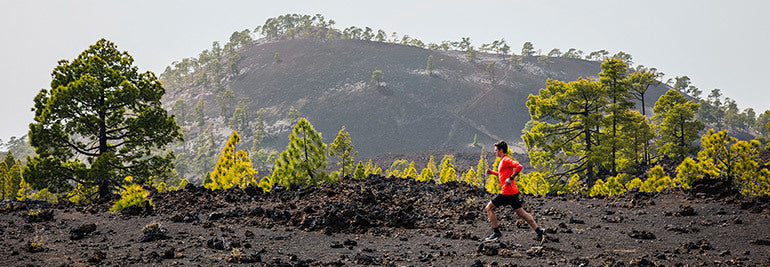
Just getting started and already full beast mode
It only takes a few minutes of talking with Mau Méndez to notice the confidence he exudes. Some might even say cockiness. Thing is, like it or not, it helps him win races.
“Usually I’m a super mellow guy, smiling and laughing all the time,” says the 2016 XTERRA World Champion. “But when I’m racing I don’t have any doubts or fear. I go into beast mode. I take on an alter ego at every race.”
Full beast mode will almost be his default for the rest of this year as he travels the world hunting trophies like the Predator hunted skulls.
While his 2018 race calendar is full with XTERRA and Ironman events, his main focus is regaining his title at the XTERRA World Championship in Maui this October. He won second last year, losing the crown to South African, Brad Weiss. Winning it back is a step towards a bigger goal.
“I have always liked to dream big,” he says. “My goal is to be the XTERRA world champion as many times as possible. I would like to beat Conrad Stoltz’srecord of five times. I think I can do it – I have time on my side.”
Méndez says he has learned and matured a lot since becoming a professional triathlete four years ago. With so much time ahead of him, and already freakishly fast, his potential is massive. And he knows it.
“Another big goal is winning the Kona Ironman,” he says. “If you win Kona you will be in the history books forever. This means you can have a positive influence on people. I am learning motivational speaking, something I would love to develop more. I want to give back too.”
It hasn’t been easy for Méndez to essentially forfeit the usual things 18 to 20 somethings revel in. He admits that after winning the XTERRA World Championship in 2016 he went through a low, when he really questioned being a full-time athlete.
“I was a 20-year-old guy and all my friends were having a great time at parties,” he says. “I wondered what I was doing with my life.
“Plus, when you win the world champs, everything changes; you feel more pressure, feel the need to win, rather than the joy of competing and racing. It was a big learning curve.”
Since that time Méndez says he has learned to live in the moment, to find the good in the bad, and regained his passion for the sport.
Getting used to longer distance races, improving his endurance and gaining experience are his main focus as an athlete. Learning to balance sport, family and downtime is important, too.
“It’s not just about winning,” he says. “If you do that and end up alone, it doesn’t mean anything. I try to remember I’m fighting for something bigger.”
The toughest race of 2018, he says, will be the Ironman 70.3 World Championship in South Africa in September. The distance, the high level of competition, and his relative lack of experience, all put him at a disadvantage. “I will train as hard as possible,” he says.
Méndez is also excited about competing in the Patagonman Patagonia Xtreme Triathlon in December. Traveling the world and seeing beautiful places is one of the things he loves about the sport.
“Every time I sign into a race, and I know I’m going to travel somewhere new, it’s a huge motivating factor for training,” he says. “I have pictures of the place on my phone or close by to keep me pumped along the way.”
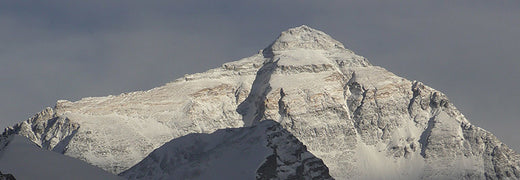
When to use your watch to get you home? Whenever you need it
The entire mountaineering world knows Kilian Jornet had not one summit this year on Everest without oxygen, but two. The first of them was record-breaking – a mere 26 hours after leaving the Everest Base Camp at 5,100m. The second was ‘just for fun’ – he was there, he felt good, so, why not do it again?
A lot of things are different at 8,000 m and above. It’s politely referred to as ‘the death zone’ with good reason – people die there, simply because they are there. In the death zone, the human body simply can’t survive for long periods of time. An extended stay without supplementary oxygen will result in deterioration of bodily functions, loss of consciousness, and, ultimately, death.
Getting into it is not a decision to be taken lightly – and getting out of it is imperative. So when record-holding Kilian Jornet lost his way while descending from 8848 m on Everest, his next few decisions would be crucial – his life would literally depend on them.
“Going down from my second ascent on Everest I got lost. It was a heavy snowfall and in the middle of the night and around 8300 m and I was traversing on technical terrain. My brain wasn’t working really well, and I had no clue where I was. Visibility was poor – I could sometimes only see about five meters in front of me – sometimes just two.”
He had left the normal route around 8300 m – and in fact, he is not even sure why. “I have a sort of "black moment" where I can't remember anything. In that time I left the normal route, but I can't remember exactly when or why.” He was clearly suffering the effects of high altitude. And of course, it was snowing: a half a meter during the night, further increasing the difficulty of navigation.
Lucky for him, he had a tool, and the presence of mind to use it: his Suunto GPS watch, which had been recording his path since he left Advanced Base Camp at 6400 m 23 hours ago. Accessing the trackback feature, he realized that he’d made a 90º degree turn to the left, and continued to traverse for one kilometer off of the normal route, and leaving him in the middle of the North Face. It was clear: he had to move in the entirely opposite direction. He did so, until he got back to the normal ridge.
In the new era of fast, light alpinism, going solo has its benefits: you’re quicker, and often, quicker is safer. "I use it about a dozen times in a year,” says Jornet. “When it’s really bad weather or really foggy, if I’m going somewhere with a lot of ridges and cornices – often, it’s really about reducing risk as much as it is about finding the way home.” This brings us to a curious realization – it’s not a last-ditch, all-odds-are-against us survival tool – it’s something to keep you from getting into that situation entirely.
That said, Jornet recognizes clearly the severe potential consequences of his situation on Everest. Without Trackback, he likely would have hunkered down in the cold for four or five more hours until daylight – and the consequences of that could have been severe. “There’s no question for me,” he says. “This feature saves lives. For sure.”
Learn how to navigate with Suunto Spartan watches or how to use Trackback on Suunto Ambit watches.




























































